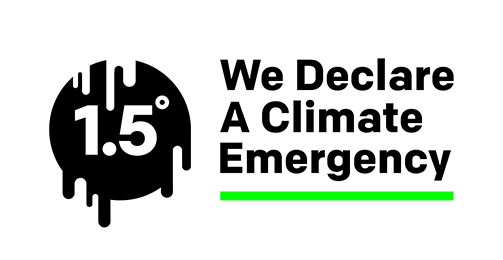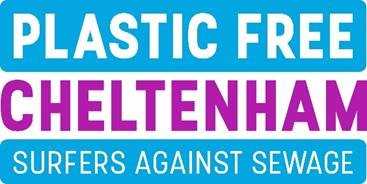Send a message 0333 344 5890 |
- Home
- Knowledge
- Learning Hub
- What is Carbon Offsetting?
What is Carbon Offsetting?
When considering ways an SME business can reduce its Carbon Footprint one of the terms it will encounter with increasing frequency is Carbon Offsetting.
Simply put, carbon offsetting is a process of investing in external carbon reduction projects, in order to balance out the carbon emissions an organisation produces that cannot yet be reduced or removed within its own operations or wider value chain.
Offsetting an organisation's so called "residual emissions" (the small proportion of emissions that are left when an organisation has eliminated all of the sources of GHGs it possibly can) is an essential element of any organisation's Net Zero plan. But the same principle can also be used alongside an organisation’s carbon reduction programme to help speed up the global transition to net zero and provide additional so called “co-benefits” such as increasing biodiversity, habitat restoration, improving human health or providing jobs in the local community.
In practice, offsetting seeks to reduce or permanently remove carbon emissions from the atmosphere, usually through creating investment in projects that result in less carbon being emitted from an activity than would normally be the case, or through the creation or restoration of habitats which absorb these emissions.
Traditionally, offsetting has been used to enable a company to achieve ‘carbon neutral’ status. We no longer recommend the use of offsetting for this purpose though it is a critical element of any ‘net zero’ plan. Our article from Carbon Neutral to Net Zero explains why.
How Does Carbon Offsetting Work?
Businesses can carbon offset by investing in and implementing projects elsewhere that reduce or store carbon to compensate for the CO2 they emit. In general, carbon offsetting can be achieved in two main ways:
- Purchasing carbon emission reductions (known as carbon credits) from other businesses that have funded suitable environmental projects.
- Investing in and managing your own carbon offsetting projects.
Carbon credits
There are two main types of carbon credits:
Carbon avoidance/saving
This method looks to either reduce the amount of carbon emitted when performing various activities by providing energy-saving technologies or avoid emitting carbon in the future by investing in energy efficiency schemes or renewable energy projects. Common schemes include providing energy efficient cookstoves, solar and wind turbine farms. This method can be used for ‘carbon neutral’ claims (although as previously discussed we no longer provide or recommend these) however it is NOT suitable for offsetting residual emissions for a claim of ‘net zero’. Carbon credits based on this method are however readily available at a low cost and can provide co-benefits for local communities including improved health, access to energy and employment.
Carbon removal
This is where carbon is removed from the atmosphere and locked-away in long-term storage. The most common methods is reforestation (trees absorb and store CO2 as they grow), but there are also new, innovative, man-made ways to capture and store carbon such biochar schemes and the 27 Direct air Capture (DAC) plants deployed worldwide to extract CO2 directly from the atmosphere, for storage or utilisation. Carbon credits using this method are suitable for both ‘carbon neutral’ and ‘net zero’ offsetting and the impact on climate change is often considered to be more robust. However, they can be considerably more expensive than carbon avoidance credits.
Ensure the Credibility of Your Carbon Credits
When purchasing carbon credits, one of the key issues for any business it to ensure the scheme it’s managing or investing in actually achieves the carbon savings it promises. Carbon credits that are verified by recognised; independent third parties will undergo a robust verification process by an accredited third-party. These credits will also all tracked on registries to ensure the emissions reductions claimed are not double counted.
Credibility isn’t just about how well a carbon credit funded project can absorb CO2 or avoids future emissions. Effectiveness is important but on its own not enough. Businesses also need to be sure that their carbon credits adhere to the best practice principles of offsetting; verifiability, additionality, permanence, and the avoidance of negative consequences for the environment.
Carbon credits that are not from recognised sources should be heavily scrutinised to confirm that the projects they are supporting and the emissions savings they are reported to make can be verified, that they have not been sold or retired previously, and are otherwise legitimate.
When you offset with Go Climate Positive, we will only use carbon credits certified by the Gold Standard, the Woodland Carbon Code or other independent organisations that verify to the best practice principles of offsetting.
Managing your own carbon offsetting projects
Of course, businesses can ensure the legitimacy of their carbon offsetting by investing in their own offsetting scheme, for example by planting trees. However, the onus is then on them to ensure that the principles of verifiability, additionality, permanence, and the avoidance of negative consequences for the environment. Careful consideration must be given to how they can demonstrate that the savings or removals have actually been made. This may require an investment in independent verification of these savings.
Benefits of Carbon Credits
While many of the businesses we work with are focussed on carbon reduction some of the impact of investing in carbon credits can have a wider, more sustainable impact.
Investing in carbon credits is important because investment often leads directly to private financing for climate-action projects that would not otherwise get off the ground, while also providing funds to support the innovation required to lower the cost of emerging climate technologies.
Additionally an investment in carbon credits can help you contribute to the achievement of global net zero, far beyond the impact that reducing your own carbon footprint can have.
Finally, carbon credits often come with additional ‘co-benefits’ such as increasing biodiversity, habitat restoration, improving human health or providing jobs in the local community.
Thus, when done with careful thought and planning, a carbon credit programme can provide reputational benefits to the organisation as well as providing benefits in the wider world.
‘Contributing’ rather than ‘Offsetting’
As our article from Carbon Neutral to Net Zero explains the concept of offsetting has attracted considerable criticism of late. This is largely due to two factors; the prevalence of poor quality schemes and the misuse of carbon neutral schemes by organisations to avoid reducing their own emissions. As previously described, at Go Climate Positive, we have robust processes to avoid both these pitfalls.
Nevertheless, we are advocating for a change in the language used and we now recommend that businesses talk about the carbon credits that they purchase or the investments they make in nature as their ‘contributions to wider impact’ on climate change, biodiversity and/or communities.
Of course, for those organisations wanting to achieve ‘net zero’ offsetting will be a vital part of their strategy, but we think that the concept of ‘contribution’ better captures the full benefits of investing in carbon reduction projects outside your organisation and broadens the applications of use.
Conclusion
Offsetting is an essential element of any organisational Net Zero programme. Beyond that, purchasing carbon credits can be an effective way to speed up the achievement of global net zero and whilst providing significant benefits to nature and human communities. When considered as a contribution to wider impact alongside an effective carbon management programme, they can also enhance the reputation of your organisation.If you would like to discuss how to create the right offsetting strategy for your business, get in touch with one of our Carbon Coaches today.
Written by Eoin McQuone

Eoin (pronounced like “Ian”) is the Chief Carbon Coach and founder of Go Climate Positive, and a Practitioner member of IEMA (the Institute of Environmental Management).
Eoin says, “Sustainability is no longer a ‘nice thing to do’, it is business critical. My goal is to make it accessible and affordable for every business, however big or small, no matter their market sector.”




